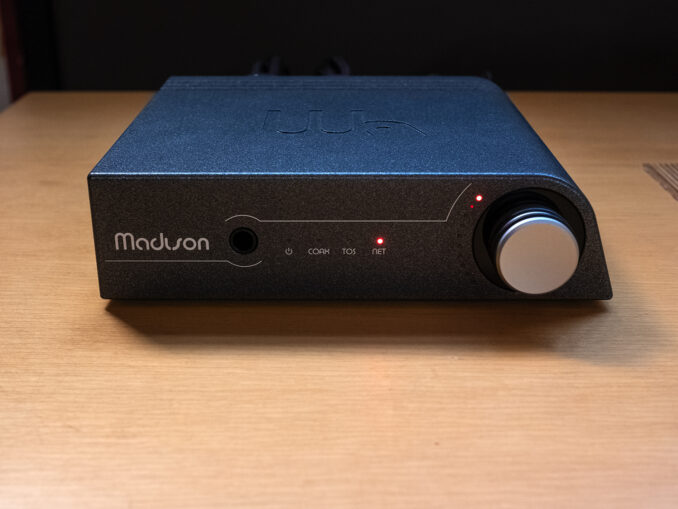
There’s part of me that wonders why all DACs aren’t streaming DACs—Ethernet in/analog out. Simple. Truth be told, I love a good streaming DAC.
What is a streaming DAC? A streaming DAC is a one box solution that connects to your home network via Ethernet or WiFi providing access to Internet-based music streaming services like Tidal and Qobuz, Internet radio, etc., as well as local storage while sending an analog signal out to your hifi. Some streaming DACs also have digital inputs so you can connect your TV and/or CD transport to it too.
Why would you want one? A streaming DAC provides access to a limitless and ever expanding supply of lossless music for a few bucks a month. Music discovery par excellence at your fingertips.

But isn’t streaming complicated? Here’s my down and dirty How To Guide for the Wattson Madison:
Hardware
- Connect the Madison to your network with a length of Ethernet cable
- Connect it to your hifi with RCA or Balanced interconnects
- Plug it in
- Turn it on
Software (for lossless streaming)
- Decide if you want to use Tidal Connect, the free Wattson app for iOS, a UPnP app, or Roon to control playback
- Open the app you picked and connect to the Madison
- Play music
Options
- The Wattson Madison has a volume control which you can use or disable. This setting is accessed from the free Wattson control app
- The Wattson Madison also has ‘Equalizers’ accessible from the app or web-based interface that provide “acoustic correction of speaker placement”
- You can adjust the Brightness of the lights on the front panel from the app
Still sound complicated? Imagine writing out all of the steps required to properly set up a turntable and cartridge.
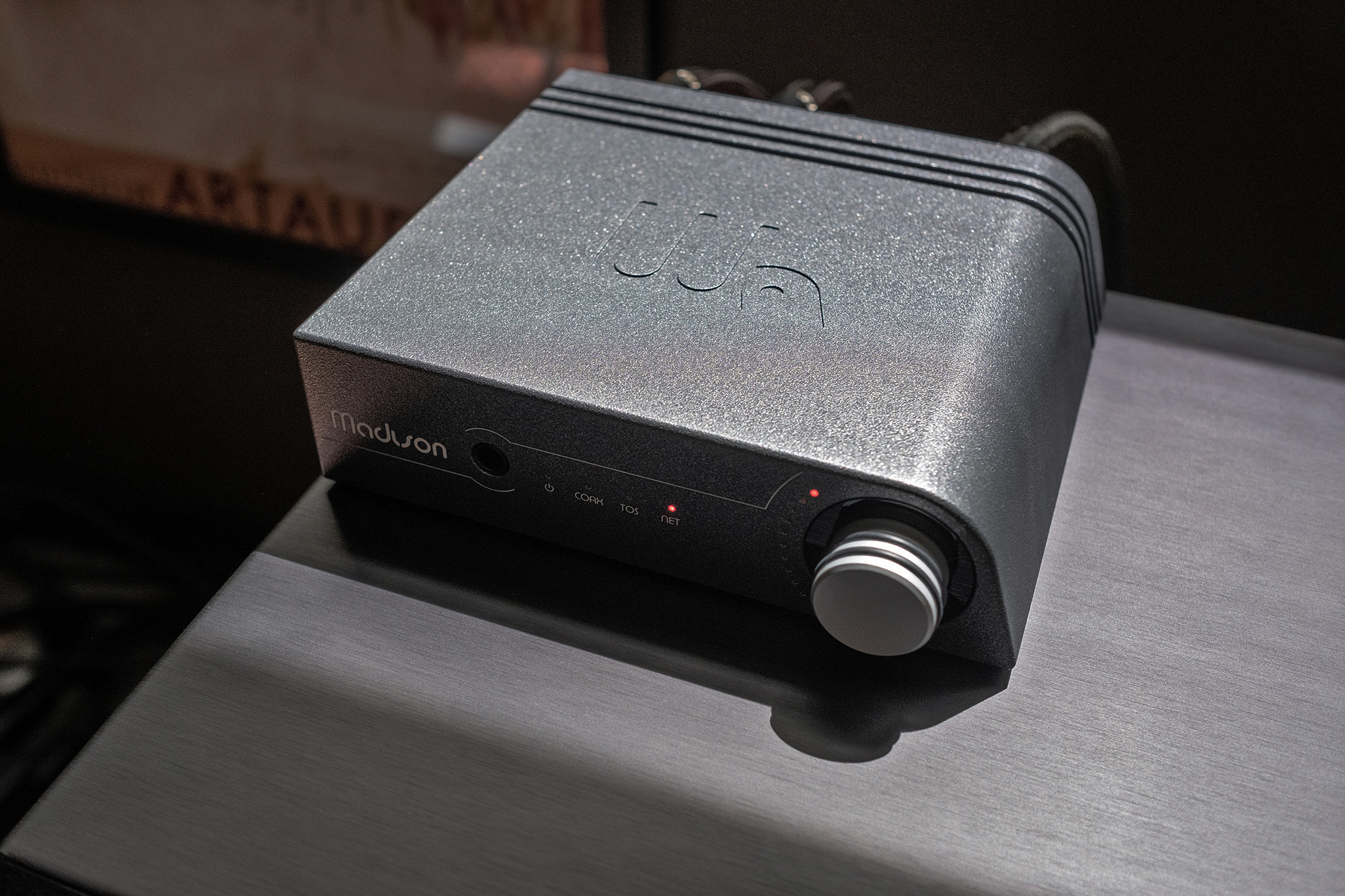
Once you get to Step 3 on the Software Setup, Play Music, the Wattson Madison will tell you—clearly, quickly, and precisely—why you made such a smart choice in buying one. One remarkable quality that sings out from the Madison is its ability to convert a digital signal into music that’s imbued with a sense of clarity and the kind of resolution that illuminates music from within, seemingly devoid of a distracting sonic fingerprint related to the processing involved. A neat trick, indeed.

In addition to the Ethernet input there are 2 digital inputs (Coax, Toslink) joined by single-ended RCA and balanced XLR outputs. DC In is where you plug in the included external 5V DC medical grade power supply. In addition to being Roon Ready, the Madison also supports UPnP/DLNA, AirPlay, Tidal Connect, Audirvãna, and through the free Wattson app for iOS devices or your UPnP player of choice, Qobuz and more. I’m a die hard Roon user so that’s what I used for the duration of this review.
On that note, if you already have Roon set up at home, you know that setting up the Software side of the Madison involves opening the Roon app, enabling the Madison, and telling Roon to play music through it which takes less time than it took me to type these sentences. Tap, tap, tap. Done.

Here are the Madison’s Key Features according to the company (and I quote):
- Proprietary bit perfect and asynchronous streaming solution
- Support for PCM and DSD high-definition formats
- New up-sampling process with time-domain optimization, legacy of the famous Anagram Technology up-samplers
- Lossless LEEDH Processing volume control for direct connection to power amplifiers
- Adjustable bass response to compensate for speaker placement near walls
- Ultra-low phase noise oscillators
- One D/A converter chip per channel in dual differential mode
- Full-symmetric analogue output stages
- Very low-noise power supply circuits
- CNC-machined out of a solid aluminium block
- Design, manufacturing and assembling entirely made in Switzerland
While it’s temping, too tempting for some, to attribute the Madison’s performance to one or two bullet points from that list, we all know that it takes much more than bullet points to design and build a DAC, or streaming DAC in this case. Picking a point or two as the reason for the Madison’s sound is like ascribing a person’s personality to the color of their eyes. It’s really everything. And more.

The Wattson Madison is CNC-machined from a solid slab-O-aluminum and measures less than 7” across. The front panel offers 3 equally sized red LEDs that light up to show the active input and a series of small to larger LEDs wrap around the left side of the multifunction knob (volume and input selection with a press) that light up to show the volume level when enabled. The multifunction knob has two rubber rings that aid in grip. Finishing out the functional front is a 1/4” headphone jack.
I like the Wattson’s asymmetrical design with one curvy side and chunk of aluminum heft. It looks and feels solid and easily fits in small spaces. I will also note that the Madison supports file resolutions up to bit and sample rates that reach beyond the current scope of recorded music so if the millions and millions (and millions) of existing great records that sound great come up short, your future is covered.
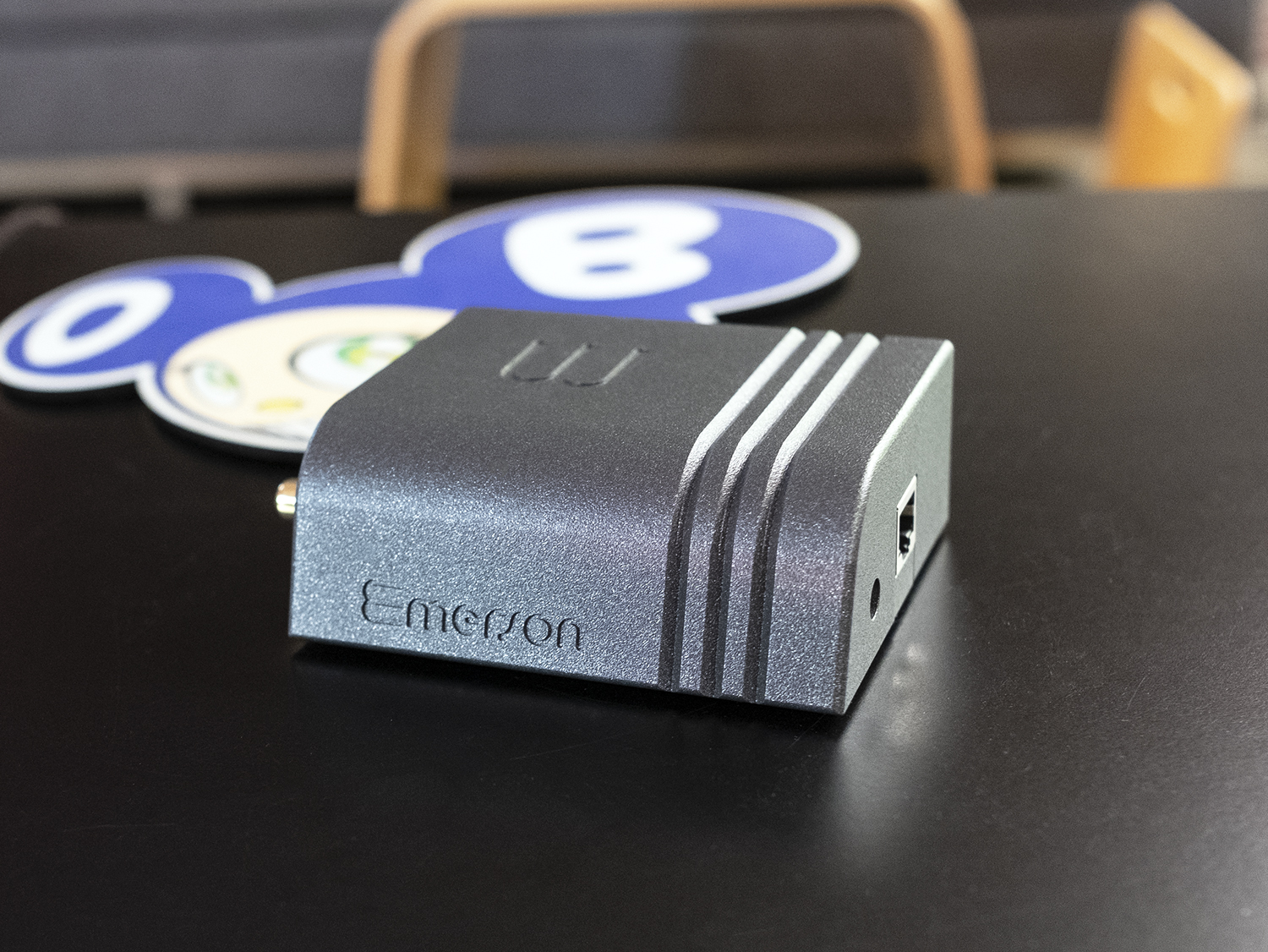
If you’ve read my favorable review of the Wattson Emerson Analog (review), you’ll recall that Wattson uses the lossless LEEDH Processing volume control which is at work here in the Madison.
From Wattson:
The patented LEEDH Processing volume control concept, which has been acclaimed by many experts, is based on a clever mathematical calculation that minimises quantization errors and guarantees the integrity of the signal. With this process, the amplitude of the digital signal can be modified without any deterioration effect and without coloring the sound. In many ways, this system combines the advantages of analogue and digital control.
Wattson Audio products with LEEDH Processing allow the digital-to-analog converter to be connected directly to a power amplifier or active loudspeakers, without the need for an analogue preamplifier to control the volume. This topology offers the advantage of an extremely short signal path, ensuring dynamic and accurate sound.
We shall see!
You can also access the Madison’s setup and configuration options from your web browser of choice by entering its IP address in the address bar (you can find this IP address in the Wattson app or your router’s web interface). This web interface is where you update the Madison’s firmware. Downloadable firmware updates are posted on the Wattson website.
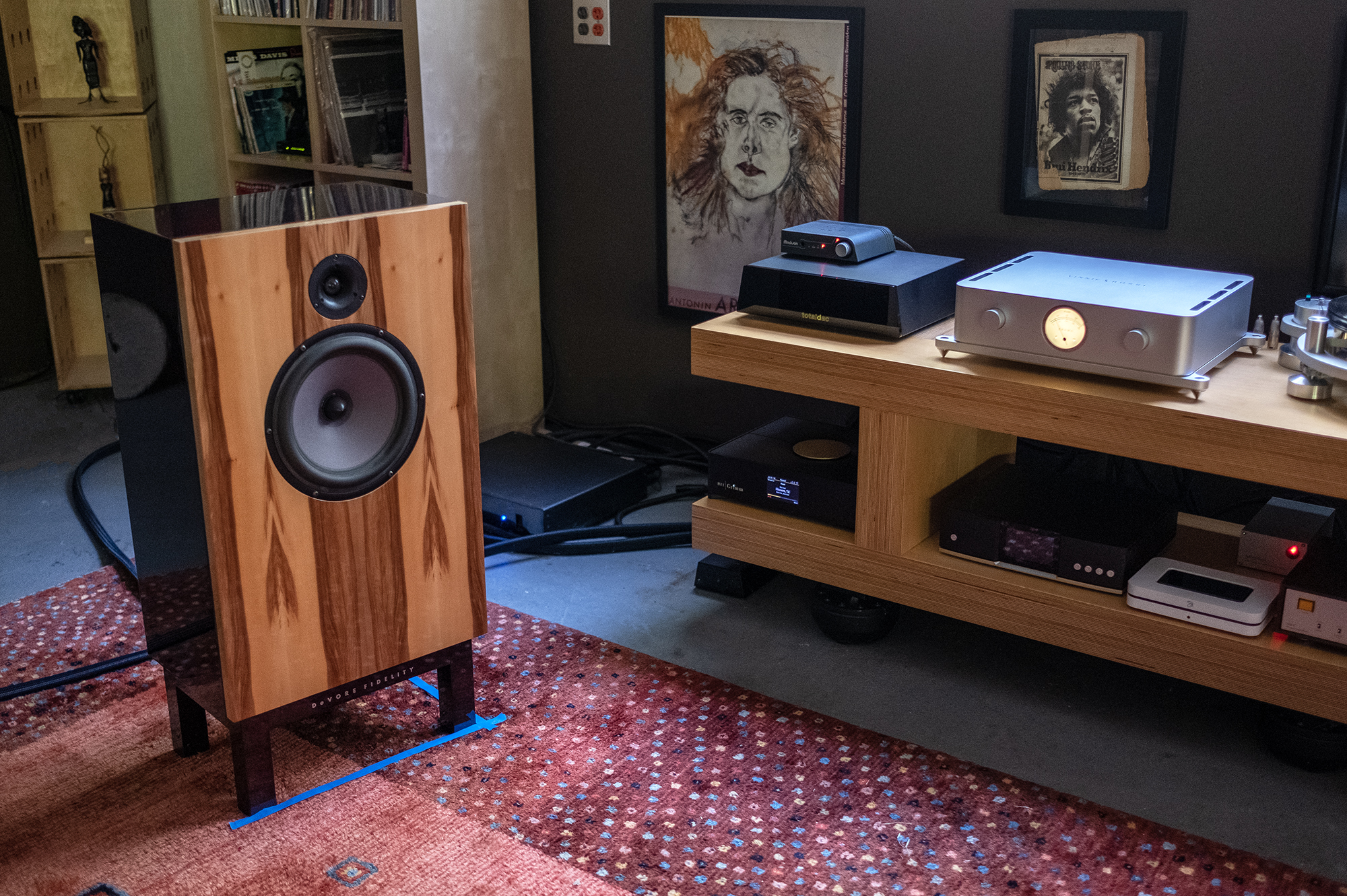
Due to timing, the Wattson Madison got to play with some fancy company during its 6-week+ Barn stay including the review BorderPatrol S20EXD (more info), Living Voice R80 OBX Floorstanding Loudspeakers (more info), Qln Reference 9 Loudspeakers (more info) and Vinnie Rossi Brama Integrated Amp (more info), as well as the Barn resident DeVore O/96 (review) and Leben CS600X. (see complete Barn and system details).
“Really?” came out of my mouth soon after I settled down into the flecked gray Florence Knoll (knockoff) couch on the Barn’s A-Side listening to the increasingly captivating What’s Tonight To Eternity by Cindy Lee, released on Superior Viaduct in 2020. Increasingly captivating because the more I listen the more I find to like and the Wattson Madison sounded as if it housed a tiny army of digital music custodians whose only job was to sweep away any and every bit of a-musical noise from its analog output, throwing out a super refined sound image that was as easy to unravel in space as real sounds in the real world. Nice.
This sense of you-are-there-ness also means that the Madison wasn’t stripping away tone and texture for the sake of über resolution, the kind of digital that makes turning music off a bigger relief than turning it on. I hate when that happens. With the Madison I’m talking about the kind of precision that had me mistaking real Barn and surrounding sounds with the sounds mixed into this wonderfully odd music coming out the DeVore O/96. I love when that happens because it draws me into the music as opposed to putting me off. Very nice.
Smog’s final album A River Ain’t Too Much to Love from 2005 is nearly too much loveliness with Bill Callahan’s plain sung/spoken baritone backed by acoustic guitar and a small host of other instruments. A kinder, more relaxed Smog.
From the liner notes:
Gaze into the sound of Smog, paddling upstream through the past, guiding us… determined.
With the Wattson Madison at the helm, gazing into Smog was a clear breeze. Fiddle, electric bass, piano, and drums all took up residence in their own well defined location in Barn forming the setting for Callahan’s vocals to meander amidst. Clarity that’s not over-cooked can keep music inviting and exciting and this was certainly the case here as Callahan’s guitar rang out life-like, resounding and fading into space with natural sounding flicker and precision. Compared to the recently reviewed Linear Tube Audio Aero DAC (review), the Madison was more precise and offered a deeper view into micro detail compared to the Aero’s warmer, richer and comparably less refined sound. All things considered, meaning accounting for the cost of whatever streamer you plan to pair with the Aero DAC, this is a cost competitive comparison and I could see different people being drawn into the sounds of one or the other. Rich and warm (Aero) or refined and natural (Madison).

Perhaps because my main reference streamer/DAC combo, the Grimm MU1/totaldac d1-unity, offers super-refined grace I’m more drawn to the Madison’s more refined sound where music projects from about as silent a place as I’ve heard from any streamer/DAC combination anywhere near the Madison’s price. In this regard, I’d call the Madison’s performance outstanding.
While the Laiv Harmony DAC (review) is a very resolving DAC, I found its sound in oversampling mode a bit too etched and in non-oversampling mode a bit too dull. The Madison, according to my preferences and tastes, really nails a more desirable balance of superb clarity combined with a natural sense of tone and texture. Combined strengths that made A River Ain’t Too Much to Love come alive in Barn. Where the Wattson Madison falls shy of the more costly and wonderful Barn resident Mola Mola Tambaqui streaming DAC (review), just to keep things in ultimate performance perspective, is mainly in the areas of scale, weight, solidity, and saturation.

Now let’s put that last comparison in practical perspective—I could easily live with the Wattson Madison as its overall performance makes music sound engaging, exciting, and tactile and when listening to music, i.e. when not comparing A to B for sound quality differences, these strengths combine to make music feel alive and vital.
Keeley Forsyth’s The Hollow is another recent release that keeps getting better the more I listen. I praised The Hollow for its “deeply felt otherness, the spectacularly lovely aching oddity” as well as what I hear as kinship with Nico and Scott Walker, a dynamic duo if ever there was one. The haunting sounds, slow moves, and Forsyth’s distinct vocals create a palpable sense of otherness that the Wattson Madison did a fine job of bringing to life in Barn. Once again, its remarkable fleshy clarity acted as invitation to this voyage and the only price of admission is one’s attention. While I’ve heard more drama and scale from more expensive separates, I was nevertheless captivated by the Madison’s portrayal.

I admit, often, to being a fan of integrated amplifiers so the Madison’s own volume control saw minimal use in Barn. That being said, I let it have its way with the ADAM A3X that have been living on my desktop for 10 years and they see near daily use usually fed by the analog out from an AudioQuest DragonFly Cobalt. I will share that the ADAM A3X are not the best desktop speakers I’ve ever heard but they still, nonetheless, satisfy. Even after all these years. And the Wattson Madison made them sing even sweeter, bringing along that superb quiet clarity and, in comparison to the DragonFly, more heft and richness. Price/performance works both ways.
As you can see, the Wattson also fit on my desktop perfectly. Perfectly. And while we’re here using the Madison’s own volume control, it’s worth noting that you can also use your app of choice, Roon in my case, to control volume. Handy!
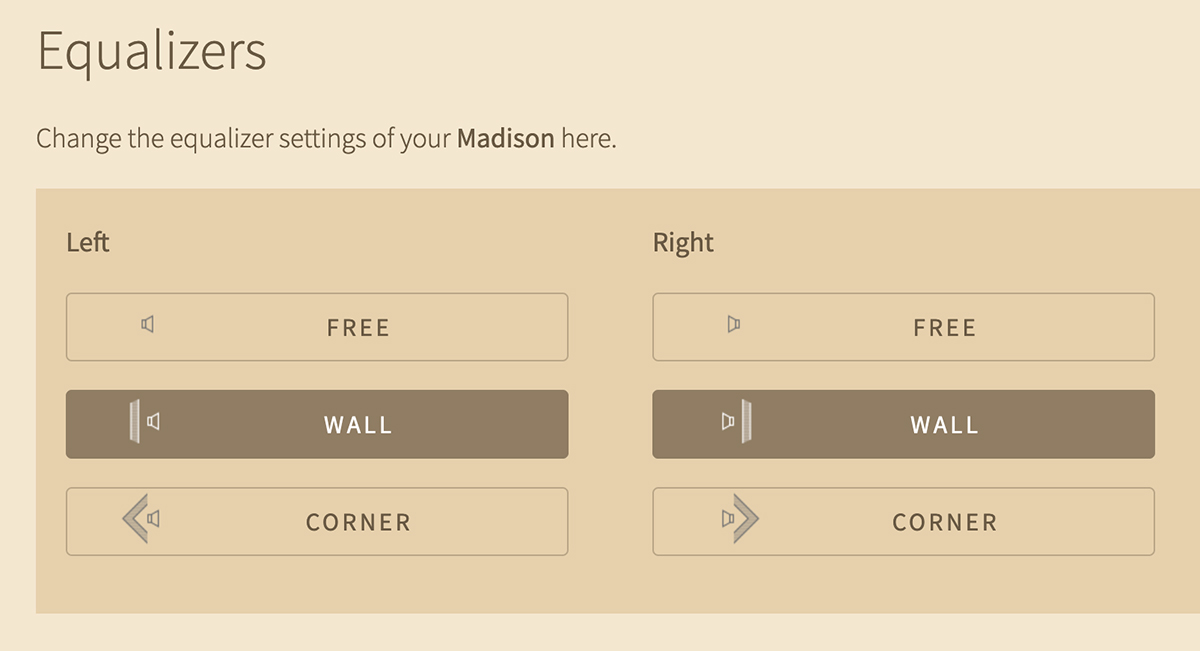
I also gave those ‘Equalizers’ a spin since my ADAM’s are but a few inches from the wall behind ‘em and the “Wall” setting in the Wattson app brought a subtle but welcome improvement in the form of a weightier sound and deeper sound image. Nice!

The Madison’s headphone out also saw minimal use as I’m not a big headphone listener (I bought a house with a barn for many reasons including my wife’s insistence on a separate listening space and to be able to listen whenever to whatever at any volume). But when I do cover my ears, it’s with the lovely Meze Audio 109 PRO that suit my tastes to a T. While the Madison was residing on my desktop I fired up its headphone out and let Kee Avil’s Spine tickle my ears up close and personal. One of the things I love about the ADAM A3X is their ability to make music sound as if it’s being reproduced inside my head, their X-Art (eXtended Accelerated Ribbon Technology) ribbon tweeter is crazy good, but the Meze 109s had Spine feeling like it was part of my anatomy.
This is another record that delights in sounds—Avil’s layered vocals, field recordings mixed and mingled with electronics, strings, and other things—and the Madison dug in deep with that wonderful sense of refinement. Captivating.

I love a good streaming DAC and the Wattson Madison is better than good. Its combined strengths of musically illuminating clarity and refinement invited me into whatever worlds the music presented. Add in its nice chunky build quality, accommodating size, a transparent sounding volume control and headphone amp and it all adds up to one deeply satisfying streaming DAC. Bravo!
Wattson Madison Streaming DAC
Price: $3500
Company Website: Wattson Audio
Key Features
- Proprietary bit perfect and asynchronous streaming solution
- Support for PCM and DSD high-definition formats
- New up-sampling process with time-domain optimization, legacy of the famous Anagram Technology up-samplers
- Lossless LEEDH Processing volume control for direct connection to power amplifiers
- Adjustable bass response to compensate for speaker placement near walls
- Ultra-low phase noise oscillators
- One D/A converter chip per channel in dual differential mode
- Full-symmetric analogue output stages
- Very low-noise power supply circuits
- CNC-machined out of a solid aluminium block
- Design, manufacturing and assembling entirely made in Switzerland
Performance
- Network streaming resolution: PCM up to 32-bit 384kHz, DSD up to 256x (11,2896MHz)
- S/PDIF input resolution: PCM up to 24-bit 192kHz
- RCA output level (0dB FS): 2,0V RMS
- XLR output level (0dB FS): 4,0V RMS
- Signal-to-noise, weighted (SNR-A): > 120dB
- Harmonic distortion (THD+N, 0dB FS): < 0,001%
- Headphone output: 2x 150mW on 32Ω, 2x 50mW on 150Ω, 2x 10mW on 600Ω
Connectivity
- Network input: 100Mbit/s Ethernet
- Digital inputs: 1x S/PDIF on RCA connector, PCM and 1x S/PDIF on TOSLink
- Analog outputs: 1x unbalanced on RCA connectors and 1x balanced on XLR
- Headphone output: 6.35mm Jack connector
Mechanical and Electrical Characteristics
- Dimensions (W x D x H): 6,9 x 7,3 x 1,9in (174 x 185 x 47mm)
- Weight: 2,31lb (1050g)
- Power supply: 5V DC, external, medical grade
- Power consumption: 50mW (idle), 3,5 W (playing)
Compatibility
- Supported compression formats: WAV, FLAC, AIFF, ALAC, MP3, AAC, Ogg Vorbis, WMA
- Control protocols: UPnP/DLNA, AirPlay, TIDAL connect, Roon Ready, Audirvãna
- Streaming services brought by the Wattson Music app: TIDAL¹, Qobuz², airable radios
¹ requires a TIDAL service account and subscription, not included with the product
² requires a Qobuz service account and subscription, not included with the product

